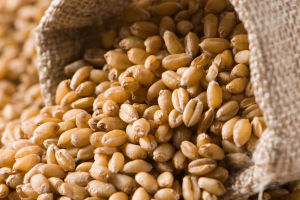Apple trees typically begin to sprout in April during the spring and usually burst into bloom in May. However, the precise timing of this process depends on the local climate.
In colder northern regions, where temperatures tend to be lower, the flowering period may be somewhat delayed.
These apple blossoms are quite delicate, showcasing white petals with a touch of reddish color. The individual flowers are rather small, measuring only 3-5 millimeters in diameter. Each bud can hold anywhere from 3 to 7 of these tiny flowers, and it's the central ones that open up first.
Interestingly, apple trees rely on cross-pollination, meaning they can't produce fruit on their own; they need help from other apple trees.
The time at which apple trees germinate and flower is closely linked to their geographical location. In most cases, they start sprouting in April and burst into bloom in May. However, in some regions, the flowering period can be pushed back, sometimes even as late as June.
As mentioned earlier, apple trees require cross-pollination, so most varieties can't bear fruit without assistance. Apple tree blossoms may appear white at first glance, but if you look closely, you'll notice a subtle reddish tint.
These blossoms aren't particularly large, with a diameter of 3-5 centimeters. Each bud can accommodate anywhere from 3 to 7 of these dainty flowers, with the ones in the middle opening up before the others.
You'll also notice a grayish-white fuzz on the flower stalk and the blossoms themselves, with long, pointed leaves on the stalk. Apple flowers usually have around 20 stamens and 5 styles.
The factors that influence the successful cultivation of apple trees:
1. Soil: The type of soil you use for cultivation significantly impacts the quality of the fruit produced by your apple tree. It's advisable to opt for fertile, deep soil with excellent drainage. The soil's pH level should be slightly acidic to slightly alkaline.
2. Sunshine: Apple trees thrive in sunny conditions. To ensure their healthy growth and flowering, it's crucial to provide them with ample sunlight. If the daily exposure to light is insufficient or if the sunlight is weak, your tree may produce fewer blossoms and have stunted growth, ultimately leading to a lower yield of fruit.
3. Wind: When planting apple trees, select a location that offers protection from strong winds. Wind can have a significant impact on the growth of apple trees. In windy areas, the tree's crown may become misshapen, and there's a risk of excessive blossom and fruit drop.
4. Watering: Apple trees dislike excessively dry conditions. It's essential to water them regularly, but be cautious not to overwater, as this can lead to waterlogged roots. If your apple trees are in an area with heavy rainfall, it's a good idea to implement proper drainage measures.


